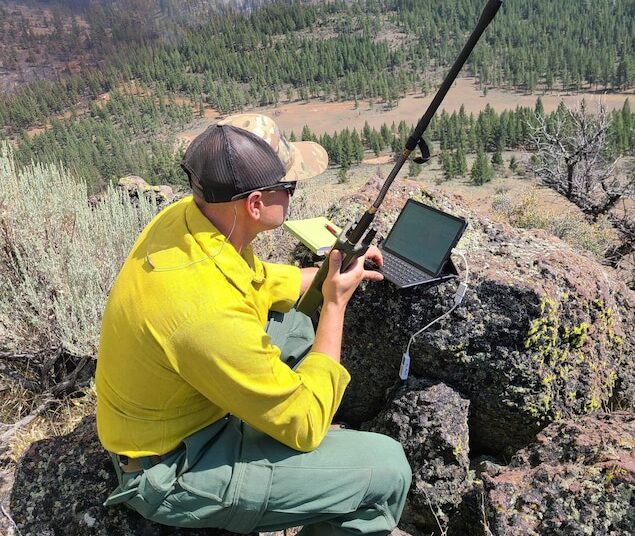Pennsylvania Air National Guard members are serving as imagery experts, providing live aerial video streaming to fire bosses working on the front lines of the devastating California wildfires.
Activated at the request of the National Interagency Fire Center, the Airmen are Tactical Air Control Party Specialists (TACP) and part of the 148th Air Support Operations Squadron. It's the first time the Pennsylvania Air National Guard has used this asset to fight fires.
The mission is similar to the TACP wartime mission, according to Air Force Master Sgt. Brent Hill, one of the Airmen on the ground and a fireman in his civilian job. TACP usually embed with Army or Marine units and call in airstrikes. Hill and his team observe terrain and provide information to commanders. When fighting wildfire, they are observing the areas and providing the information to first responders.
The team uses imagery, also known as Distributed Real-Time Infrared or DRTI, from an RC-26, a fixed-wing intelligence, surveillance and reconnaissance aircraft operated by Air National Guard pilots.
"What makes this work so well here is the IR [infrared] capabilities of the plane," said Hill. "The smoke makes visibility impossible, but using IR allows the plane to 'see' through the smoke."
Hill, Senior Airman Julius Reed and Staff Sgt. William Gray collect the imagery and provide information to fire bosses.
"We meet with each of them and determine what their needs are," he said. "Sometimes they are looking for us to spot fires ahead of the fire line, and sometimes it's providing oversight during back burning. Regardless, we provide additional incident awareness and assessment."
The Air National Guard assistance is welcome, according to George Violante, the National Interagency Fire Center's distributed real-time infrared (DRTI) liaison.
"The entire fire service lacks firefighters, equipment, and especially intelligence-capable assets. Being able to utilize TACPs and the ISR aircraft during fire suppression efforts is filling a large gap that we in civilian government lack. The expertise TACPs bring truly makes our jobs much easier, safer, and can translate into our mission objectives," he said.
Hill said the Airmen are drawn to missions like these.
"This is an amazing opportunity to help save lives and property and use the skill sets we've learned," Hill said. "I'm fortunate to have the support and training from both my civilian job and the military."
Violante said the Guard members require limited training and can engage quickly.
"We appreciate their time away from their families and the long hours they work to support the National Interagency Fire Center and fire staff on the ground," he said.






